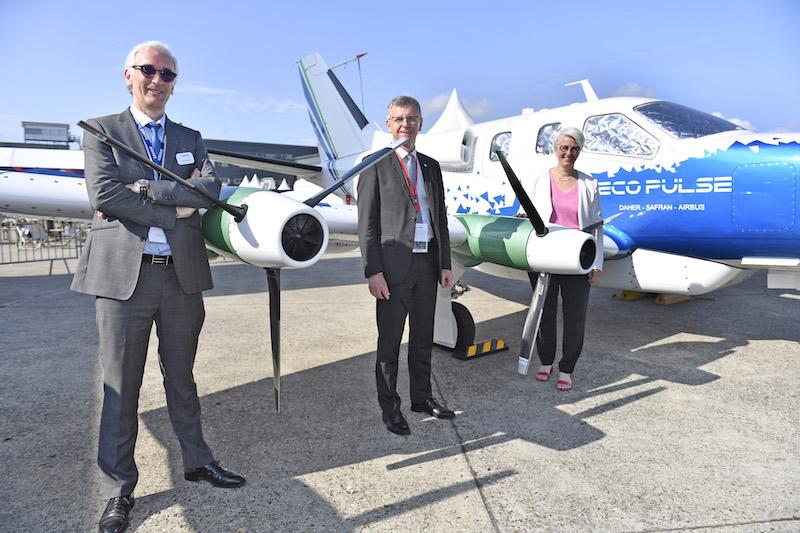
From left, Pascale Laguerre, Daher's CTO, Eric Dalbies, Safran's CTO and executive vice president for strategy, and Airbus CTO Sabine Klauke at this year's Paris Air Show.
Credit: Mark Wagner/Aviation Images
LE BOURGET—Daher, Safran and Airbus expect to fly the EcoPulse distributed hybrid-electric propulsion demonstrator on electric power this fall. The team has completed 30 hr. of flight testing without power to the electric propellers to collect baseline aerodynamic data on the modified TBM 700...
Subscription Required
This content requires a subscription to one of the Aviation Week Intelligence Network (AWIN) bundles.
Schedule a demo today to find out how you can access this content and similar content related to your area of the global aviation industry.
Already an AWIN subscriber? Login
Did you know? Aviation Week has won top honors multiple times in the Jesse H. Neal National Business Journalism Awards, the business-to-business media equivalent of the Pulitzer Prizes.
